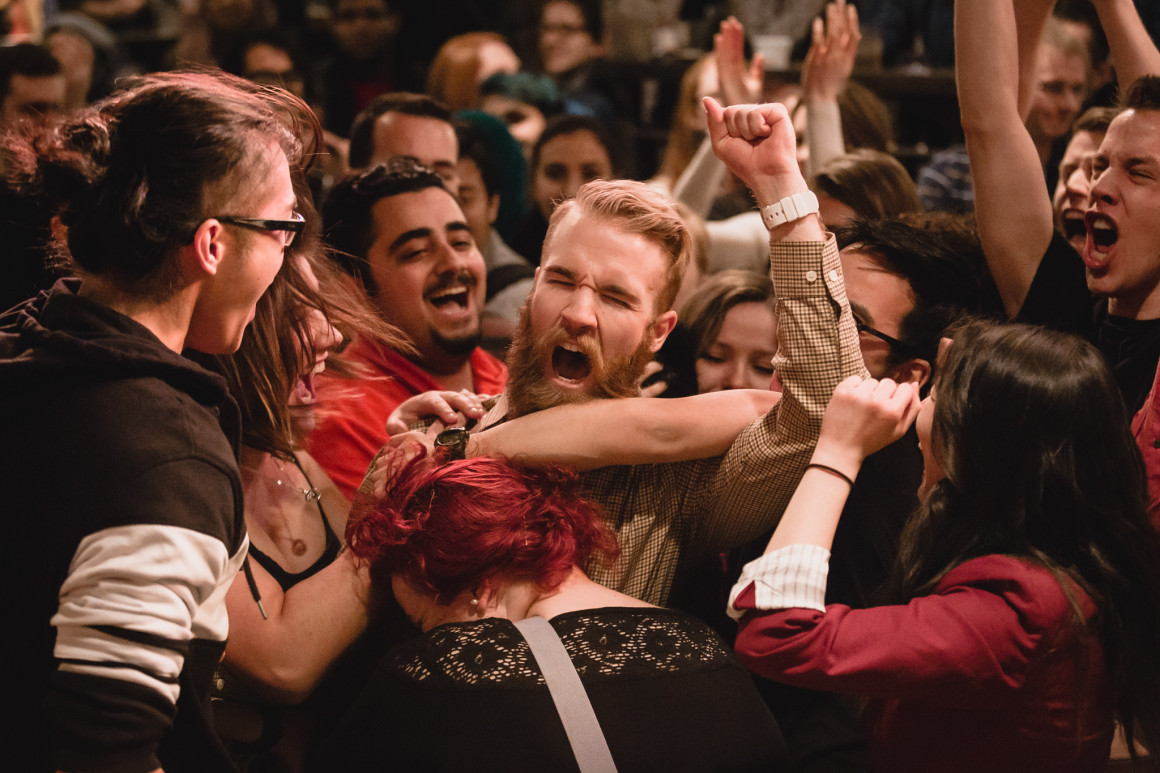
What makes students vote for SU candidates?
Sean Willett, March 8, 2016 —
This year’s University of Calgary Students’ Union election is finally over — the posters have been pulled down, the class speeches have stopped and the threat of being cornered by a grinning weirdo while in line at Tim Hortons has gone down somewhat. Stephan Guscott is our new president, winning with a hefty 48 per cent of the vote. He beat out opponents Nick Boots and Jordan Grant, who took 28 and 24 per cent respectively.
But there are still lessons to learn from this year’s presidential race. This election saw three very different candidates run with three very different campaign strategies — one of which worked and two of which didn’t. But what made Guscott’s campaign successful? And what could his opponents have done differently?
On the surface, a win by Guscott might seem surprising. His campaign posters were by far the least professional of the three candidates, focusing on a weird bearded-Batman gimmick. While Boots and Grant had slick, serious posters featuring pictures of the candidates alongside major platform points, Guscott’s were mostly crudely drawn Batman logos with caricatures of his face on top.
Guscott also had the most boring platform of the three candidates. Grant promised he would steer the university in a completely new direction, while Boots claimed he could lower the cost of parking and textbooks. Guscott, on the other hand, campaigned on restructuring nominations committees and fighting for ownership of MacHall — dull issues for most students. So why couldn’t Grant or Boots pull ahead?
Grant’s loss is easier to explain. As a business student, Grant was running on an incredibly business-focused platform. He either assumed that every student at the U of C had the same priorities as business students, or that he could get enough business students to vote for him that it wouldn’t matter. Either way, it didn’t work.
Boots aimed for a broader appeal. He ran a populist campaign focused on flashy ideas that sounded immediately appealing, even if they were relatively superficial. He also leaned on public image building initiatives like his charity drive. In other words, he ran his campaign like a real politician would. And in a non-student election, it might have worked.
But this isn’t ‘real’ politics. It’s student politics, and the game is different.
It’s tempting to think that Boots’s downfall — and Guscott’s success — was the result of an informed and conscientious voter base, one that took the effort to engage with the candidate’s actual platform points. Both Grant and Boots were unclear on how they would achieve many of their more extravagant promises, most of which fell far outside of the role of the SU president. Grant wouldn’t have the executive power to make the university entrepreneur-focused, and Boots would have no control over textbook or parking prices.
Guscott’s platform points, on the other hand, were all relatively sensible — even if they were pretty unimaginative. He was also the most experienced candidate, and the one with the fewest blunders during interviews and forums. Maybe students saw through the posters and gimmicks, and actually assessed the candidates based on research into the feasibility and quality of their platforms. They are university students, after all.
Unfortunately, it is far more likely that Guscott dominated because of his half-baked pop-culture gimmick. Like the other executive winners of this election, Guscott had a bunch of large, simple banners with not much besides a logo and his name. He also had a clear, coherent theme — even if it was one as baffling as ‘Batman with facial hair.’
The other candidates lacked this consistency and clarity. Grant’s campaign seemed to be ‘piano-playing investor’ themed, and Boots was branding himself as a waders-wearing communist leader that was also somehow a staunch conservative. It made Grant seem like a supervillain and Boots like he was trying to lead a worker’s revolution on a cranberry farm. And neither of them put up anything like Guscott’s giant sign by the train station or his massive bat-banner on the MacHall stairway.
Because despite Grant’s bold vision or Boots’s political savvy, neither had Guscott’s two key ingredients for a successful SU campaign — a consistent gimmick and high visibility. And unsurprisingly, it was Guscott’s name in the minds of most students when they went to the polls — though it didn’t hurt that Guscott was an experienced candidate with a solid platform. But future student politicians candidates should remember that cheap costumes and glued-together cardboard are still the keys to the student body’s heart.
